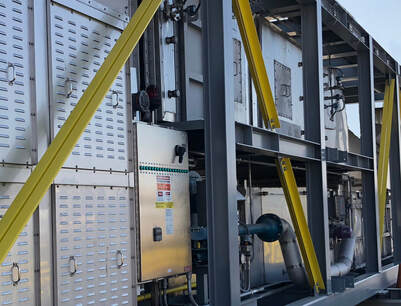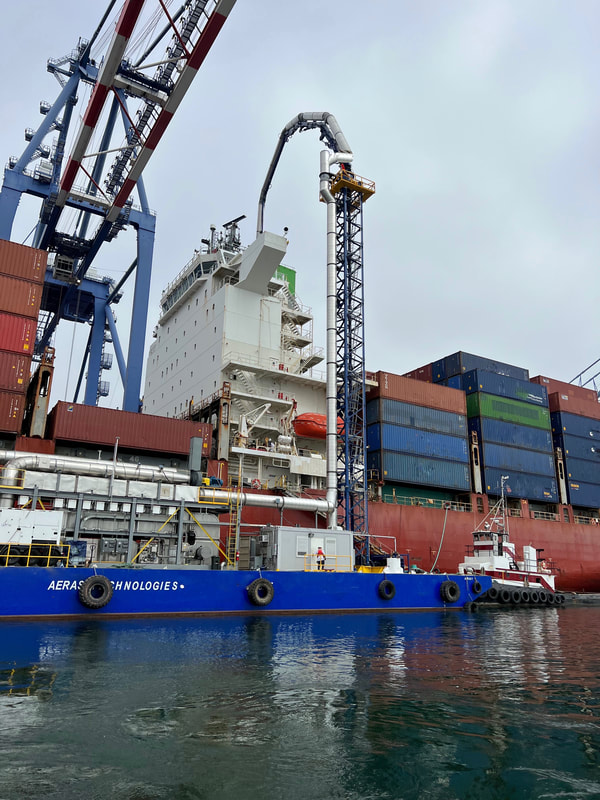|
Port Air Quality is a Dangerous and Growing Problem
Large Ocean-Going Vessels use diesel-fired engines and burners to run boilers and generate on-board electricity while moored in port. These ships release substantial pollution, degrading our atmosphere and impacting our region's most disadvantaged communities. The South Coast Air Quality Management District (SCAQMD) projects that by 2023 oceangoing ships will surpass heavy-duty diesel trucks to become Southern California's largest source of air pollution. The primary pollutants emitted from the exhaust stack of an oceangoing vessel are NOx and diesel particulates. NOx emissions consist of nitric oxide (NO),nitrogen dioxide (NO2) and other forms of oxidized nitrogen. They are highly-reactive and elevated concentrations are known to irritate the respiratory system, contribute to the development of asthma, increase susceptibility to respiratory infections, triggering increased hospital admissions and emergency rooms visits. NOx molecules also interact with water, oxygen and other chemicals in the atmosphere, forming acid rain, harming sensitive ecosystems and contributing to nutrient pollution in coastal waters. Diesel particulates are unburned hydrocarbons from the combustion of diesel fuel. Particulates can cause respiratory irritation, bind with and discolor exposed materials and are harmful to humans and wildlife. Filtration systems for removing particulates, mandated on land-based vehicles, are not generally found in the power systems of Ocean-Going Vessels.
|


